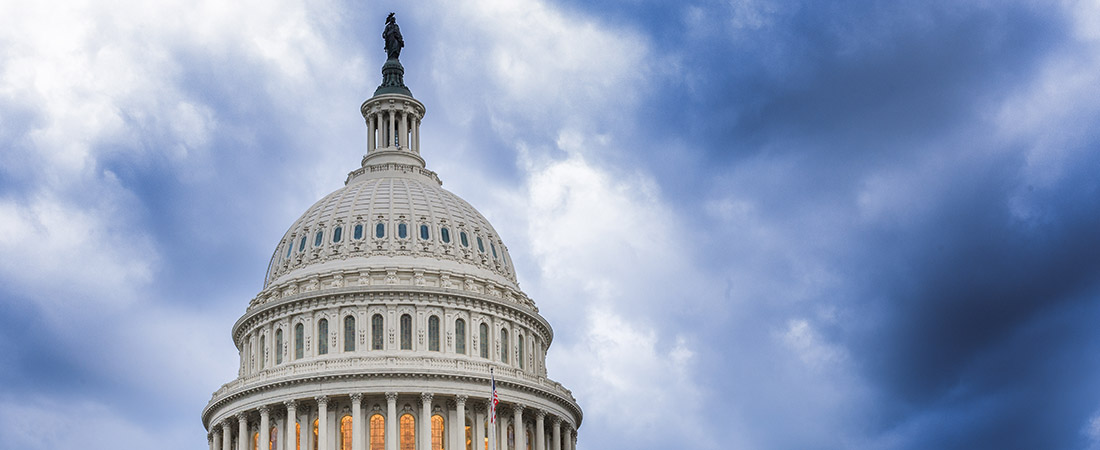Jan 22, 2018
What’s the Big Deal About a Government Shutdown?
Shutdown averted! Here’s why it could have been no laughing matter for the economy

A long U.S. government shutdown has been averted, and not a moment too soon.
On Saturday night, Congressional lawmakers were unable to reach an agreement on a federal spending bill to keep the government open.
By Monday morning, federal buildings were shuttered, and hundreds of thousands of government workers were expected to be put on furlough, until lawmakers could reach an agreement to turn the lights back on.
Then by Monday afternoon, divided members of Congress agreed to a temporary spending measure that will keep the government funded and open until February 8.
While that’s all well and good, Congress still has to go back to the drawing board to come up with a more durable spending bill that will keep federal funds flowing until the end of the government’s fiscal year.
We explain why passing a spending bill everyone agrees on is all so complicated, and why shutdowns, even brief ones, are no good for the economy.
What is a government shutdown?
The federal government shuts down when Congress–which includes both the House of Representatives and the Senate–can’t come up with a budget agreement.
While the budget agreement is supposed to be about funding government operations, politics plays a big role.
What caused the shutdown?
This year, differences over undocumented immigrants, in particular a group of young adults and children called Dreamers, and health care for children have proven to be the biggest sticking points.
The House came up with a budget agreement last week, but the Senate was unable to agree on its own version.
What is the Federal budget for?
Politics aside though, just like your own household, the federal government depends on a budget to keep operating. And Congress is responsible for raising money, chiefly from the collection of taxes, and setting spending levels for various governmental programs and services.
Every year, Congress creates a budget that funds a wide array of vital national services, including running the military and staffing our national parks, museums and libraries. But the federal government also operates other critical services, such as the National Institute of Health, the Center for Disease Control, as well as air traffic control at the nation’s airports, and staffing federal prisons. It funds payments for Social Security, Medicare, and Medicaid.
Additionally, although the U.S. Postal Service is self-funding, it’s also part of the infrastructure of government services.
Congress still has to go back to the drawing board to come up with a more durable spending bill that will keep federal funds flowing until the end of the government’s fiscal year.
How big is the federal budget?
The federal budget is quite large. In fact, the spending bill for fiscal year 2017 was about $4 trillion.
You may not know it, but the federal government is also one of the biggest employers around, and it uses the money from its budget to pay its workers. It employs close to a million people, and its funds about $500 billion in contracts to businesses that rely on it for payments for the work they do that benefits the government. That can include companies like Boeing, that build aircraft for the military, or Verizon, which builds telecommunications systems for government workers.
As of Monday, about 800,000 people were on what’s known as a furlough. Many were asked not to report to work, and if the shutdown had lasted, it could reportedly have reduced or delayed the payment of their wages.
Why was everyone so worried about the shutdown?
Because the federal government is such a large employer, and because its contracts with businesses are worth hundreds of billions of dollars, a government shutdown causes significant concerns.
Many services that are deemed essential to the safety and necessary functioning of the country typically continue–so Social Security checks will go out, and military members will continue to get paid, and the nation’s legislators will also receive their checks as they try to hammer out a deal.
But many other institutions and services operated by the federal government tend to take a hit. National parks, monuments, and museums may have curtailed hours and staffing. Similarly research arms like the CDC, which responds to epidemics such as the current flu outbreak currently underway, may see significant staffing cuts.
Stash Learn Weekly
Enjoy what you’re reading?
[contact-form-7 id="210" title="Subscribe" html_id="default"]What’s the big deal?
While shutting down a national park may not seem like a big deal, think of it this way. Not only the park misses out on important revenue opportunities from visitors who pay the entrance fees, the closure also has important economic ripple effects: nearby businesses that serve tourists, from restaurants to gift shops and gas stations, also feel the pinch when visitors drop off and stop coming.
Similarly, when paychecks are delayed for those nearly 1 million workers, they pull in their belts and stop spending in their local economies.
How does the budget process work?
The federal government’s fiscal year runs from September 30 to October 1. So the fiscal year for 2018 actually began in 2017.
Typically Congress submits its budget for the upcoming year by February, and it’s negotiated and approved sometime in the summer, well before the new fiscal year begins. In the current circumstance, since members of Congress have been unable to agree on a spending bill for fiscal year 2018, it’s managed to keep the government functioning through temporary spending measures, called continuing resolutions, which have extended funding for several weeks, or months at a time.
What happened during the last shutdown?
Government shutdowns are not good for the economy.
The last government shutdown, which occurred in 2013, spanned 16 days. By some estimates, it cost the economy $20 billion, and shaved 0.5% from economic growth that year. The Obama administration, in a report from the same year, estimated the shutdown also cost the economy about 120,000 jobs, as things like contracts, loans from the Small Business Administration to the nation’s smallest businesses, and grants for research were all delayed for months.
So far, markets have taken the shutdown in stride. The Dow Jones Industrial Average and the S&P 500 were up 80 and 14 points respectively by mid-day.*
*Source, Yahoo Finance, January 21, 2018











